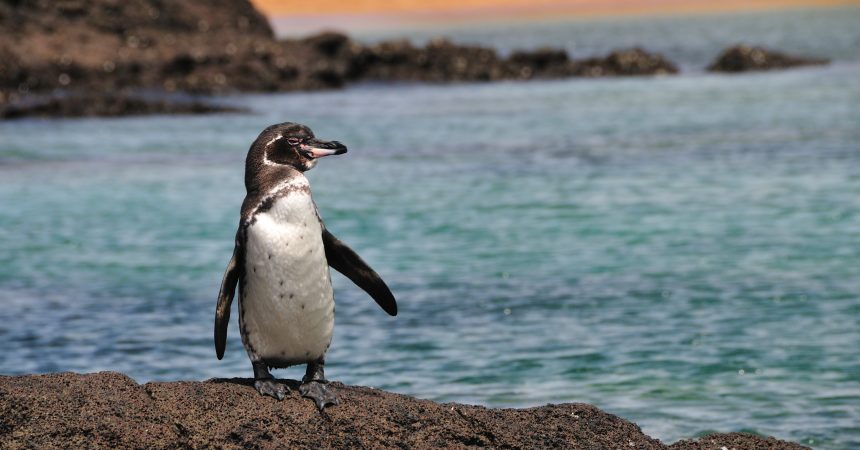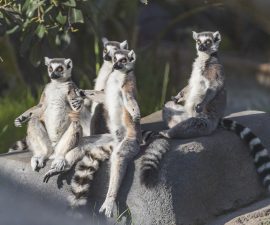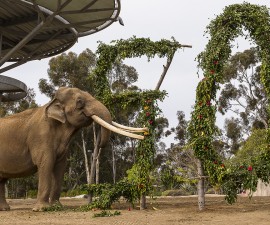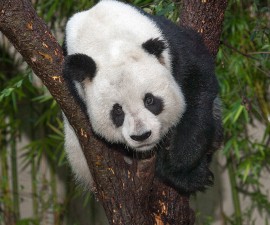April 25 is World Penguin Day and to help you get in the celebration spirit, we offer this ‘deep dive’ into the world of penguins.
In the category of black-and-white-and-cute-all-over, penguins give pandas a run for the money. But there’s more to penguins than meets the eye. As excitement is building for the opening of Africa Rocks, this is a good time to get to know penguins. Here are 10 fascinating facts about our black and white, feathered friends:
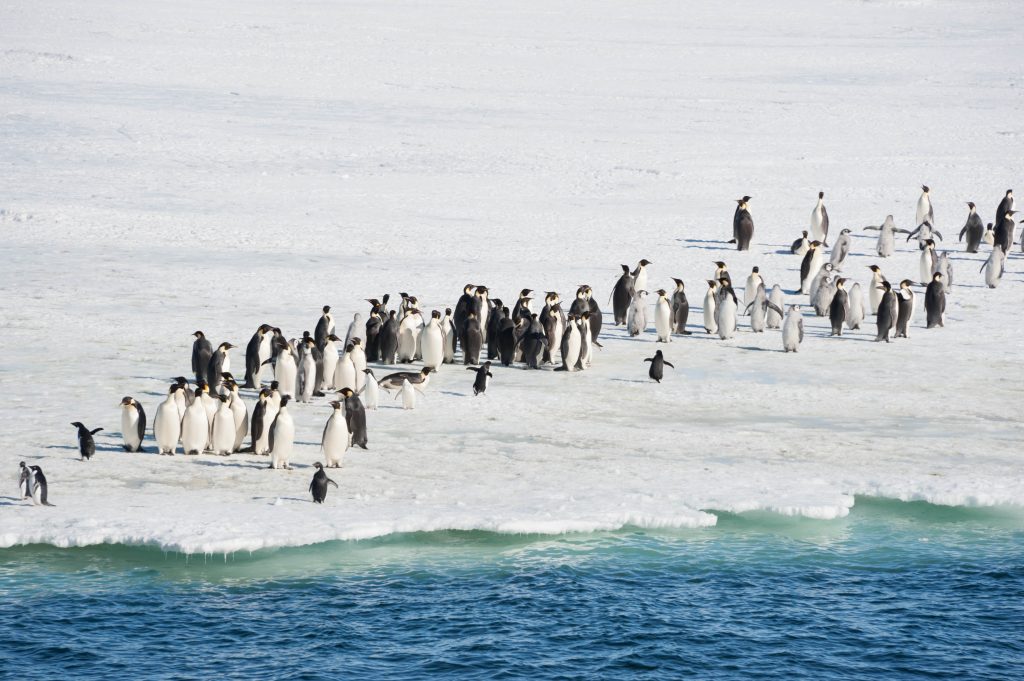
Emperor penguins (the largest) and Adelie penguins
All 18 species of penguins live in the Southern Hemisphere. The southernmost species are the Antarctic Adélie and emperor penguins. The northernmost species is the Galápagos penguin, which makes its home in the Galápagos Islands, on the equator.
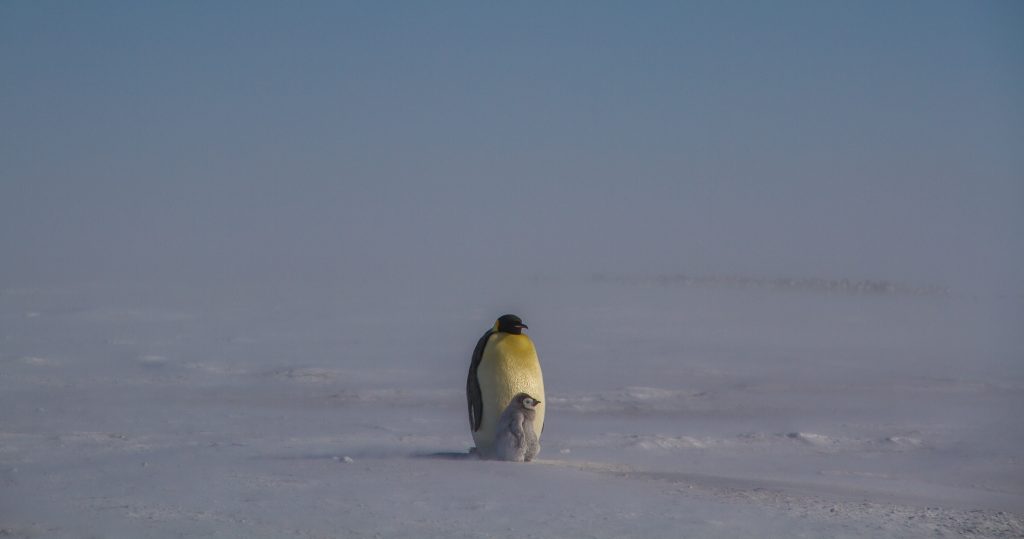
Emperor penguin and chick
Penguins are “warm blooded.” Even in the frigid Antarctic winter, an emperor penguin’s core body temperature is a toasty 102 degrees Fahrenheit (39 degrees Celsius).
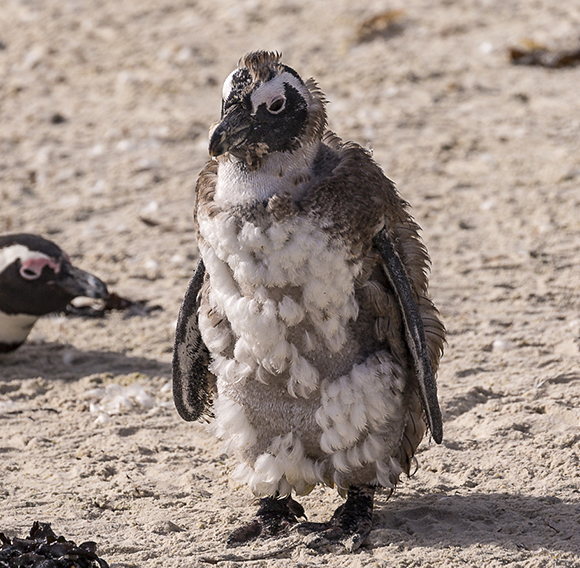
African penguin
Periodically, penguins shed their old feathers and grow new ones—a process called molting. Molting takes about two to five weeks, depending on species. As each new feather grows, it pushes out an old one. This gives a penguin a bedraggled, scruffy look.
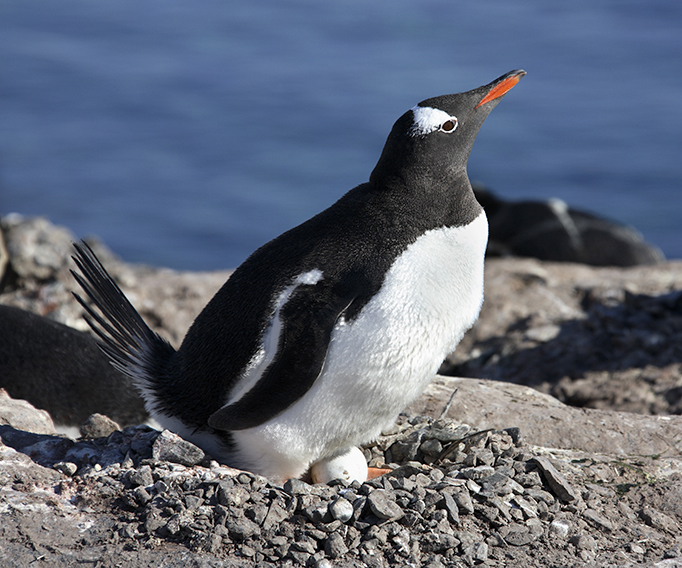
Gentoo penguin
A penguin that can’t swim, can’t eat. That’s because penguins get all their food from the sea. There are two times during the year when penguins can’t swim—or eat. One is during the annual molt, when penguins aren’t waterproof. The other fasting period is associated with breeding and incubating eggs.
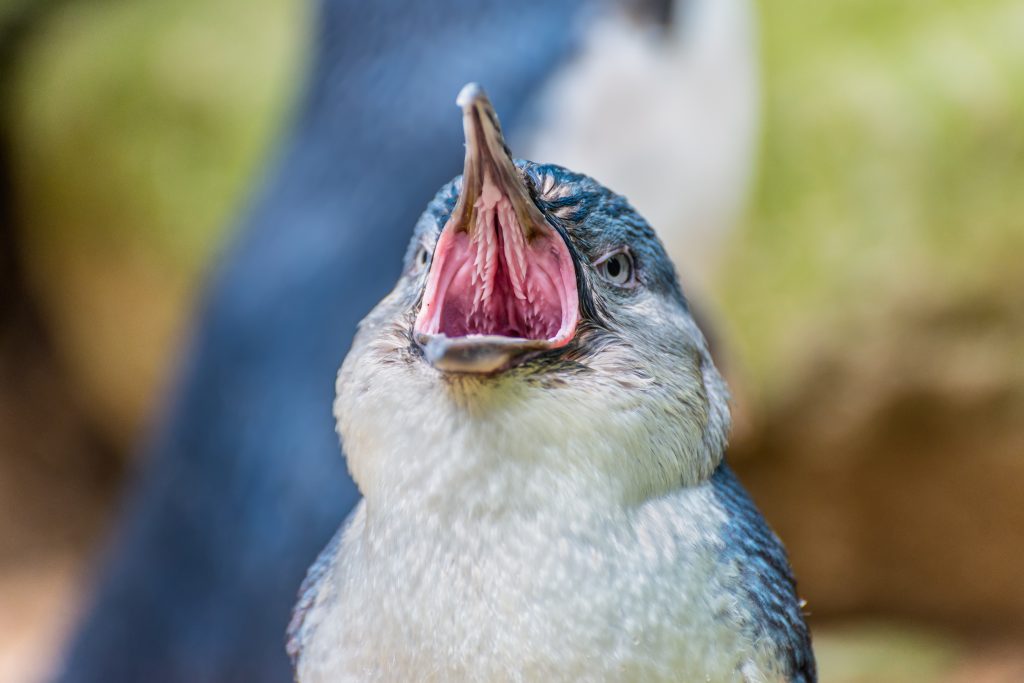
Little penguin
Penguins don’t have teeth. But the inside of a penguin’s mouth—and its tongue—are armed with backward-pointing spikes that clamp onto slippery, wriggling prey and prevent its escape.
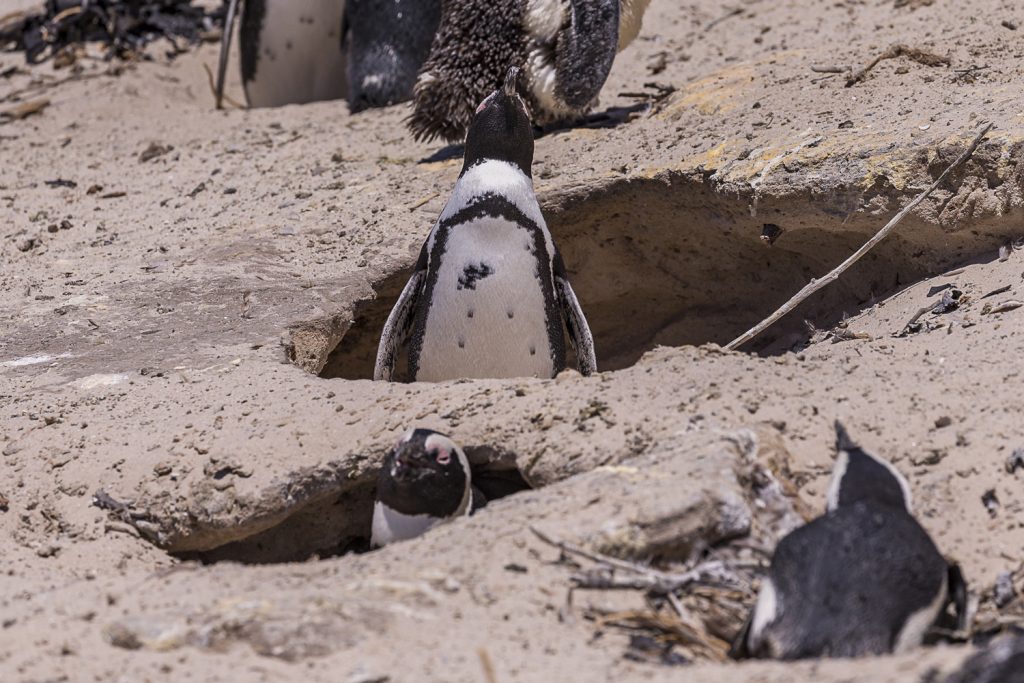
African penguins
Some penguins nest in underground burrows, where they are hidden. Where the soil is suitable, little penguins, along with many of the temperate penguins, dig burrows. Thick layers of guano (bird droppings) are good places for burrows.
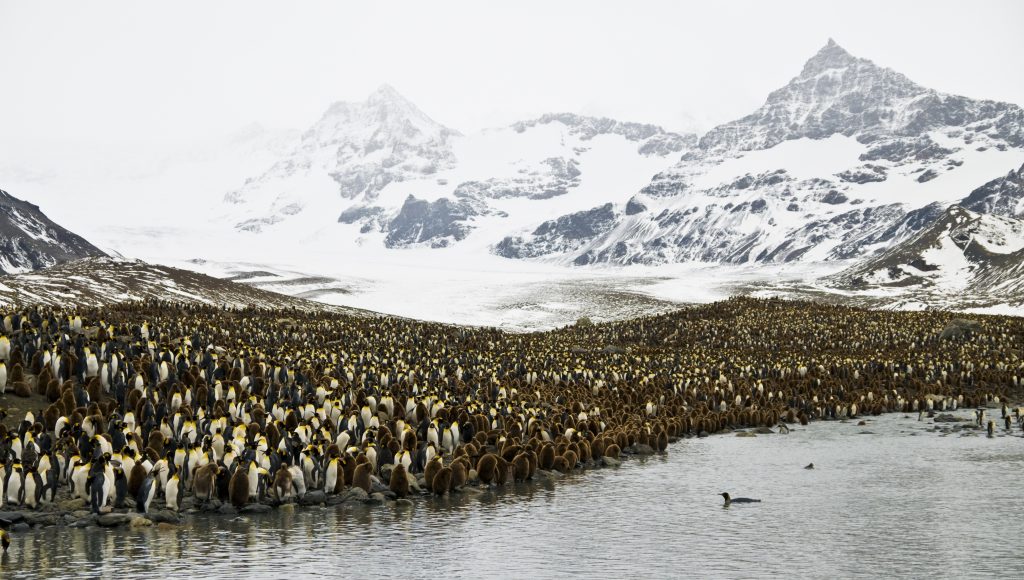
King penguin colony
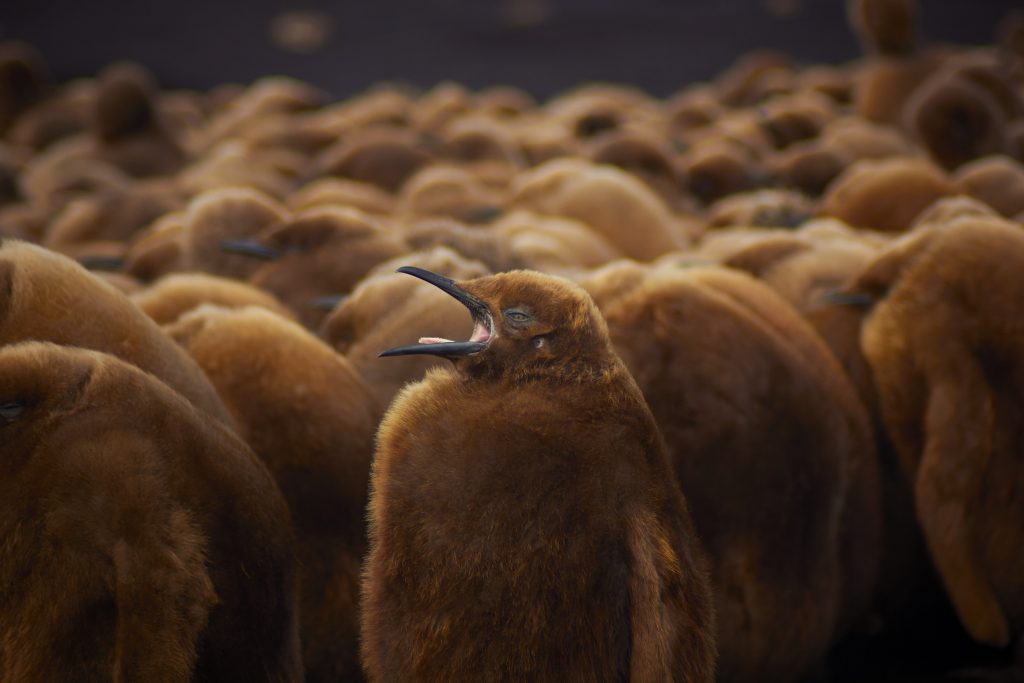
King penguin chick
Penguin parents know their chicks. How do they find their own chicks when they return to a colony with hundreds—sometimes thousands—of look-alikes? Parent and chick recognize each other’s voices. As an adult approaches the nesting site, it begins to call, and its chick answers. Penguin parents feed only their own chicks.
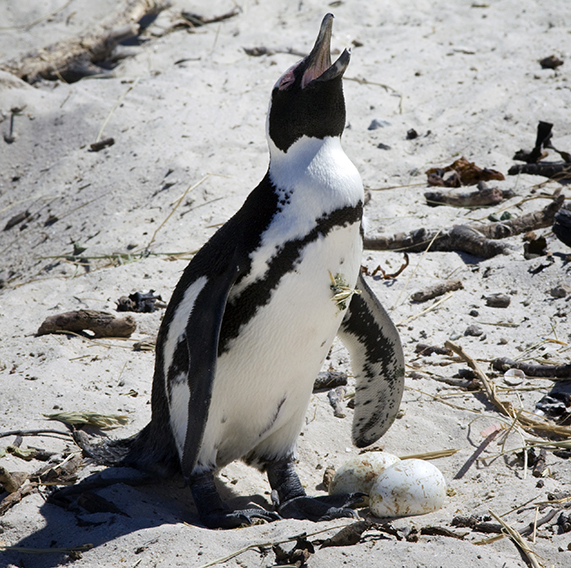
African penguin
People prize penguin poop. The accumulated droppings of penguins and other seabirds (as well as seals and bats), called guano, are a rich source of nitrates and phosphates—making this type of manure especially valuable as fertilizer. For the most part, guano collection in penguin habitat has stopped, but the damage that was done in the past has taken a lasting toll on habitats. Some penguins are left without a suitable substrate for their burrows, so they nest on open ground. This makes eggs and chicks more susceptible to predation, parasites, overheating, flooding, and abandonment.
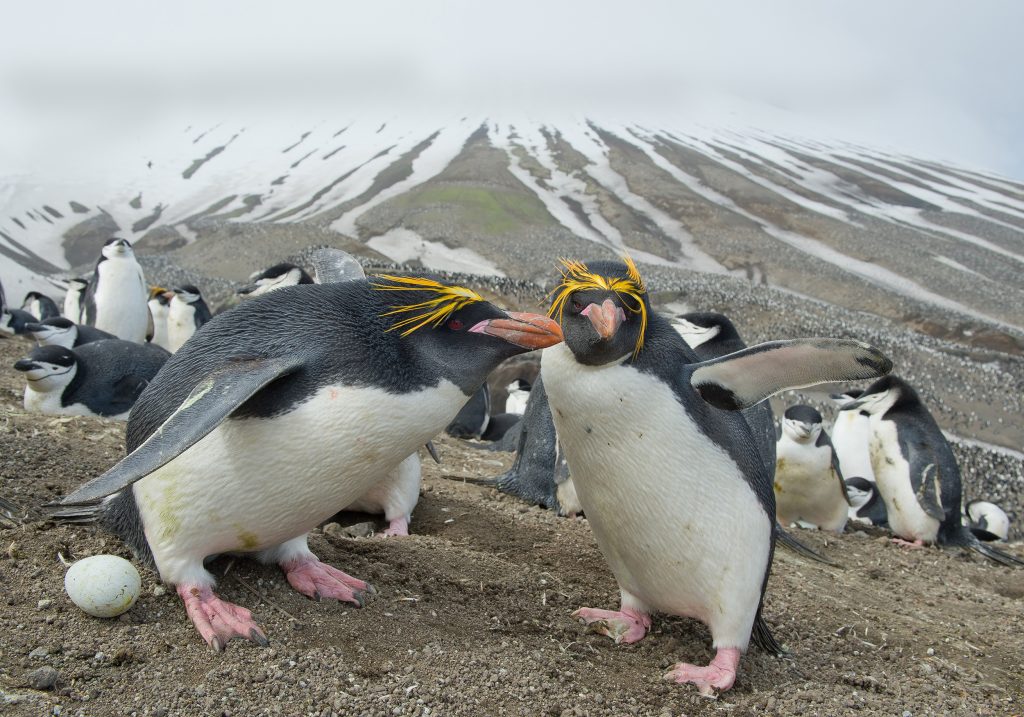
Macaroni penguins
About half of all penguin species have some sort of brilliant yellow or orange feathers. When researchers analyzed the bright pigment in those feathers, they were surprised to find that the composition of the pigments didn’t match any previously known major classes of color-generating chemicals. In fact, these pigments—which they called spheniscins, after this order of birds—appear to be chemically unique to penguins. Penguins synthesize spheniscins; these pigments don’t come from the birds’ diet.
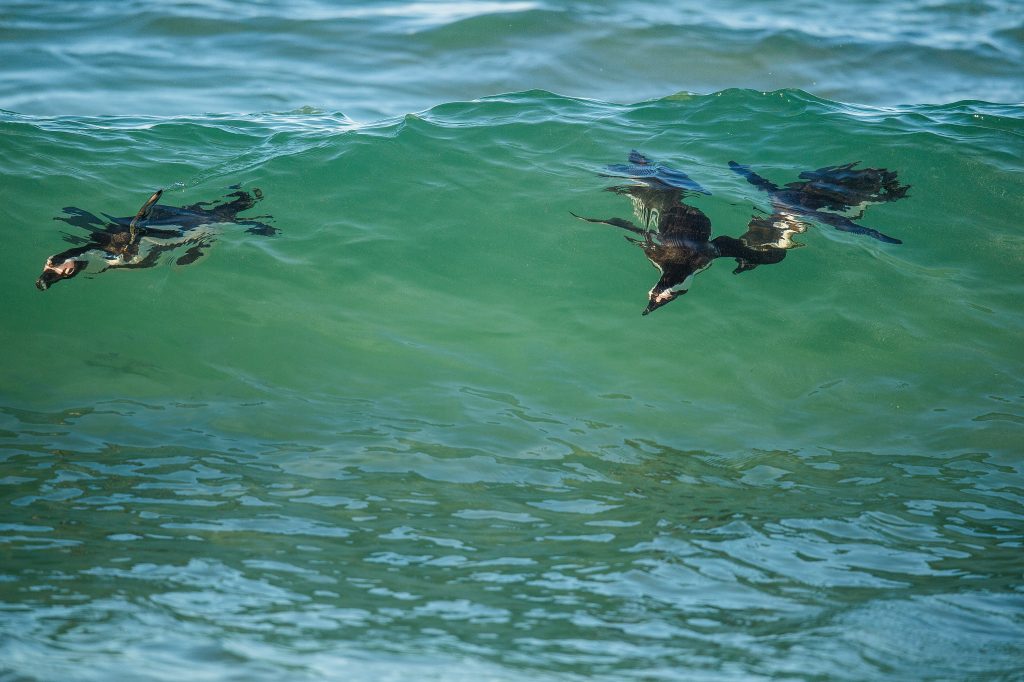
African penguins
Penguins see well in the water and in air. They see especially well in green, blue, and violet light—the wavelengths that penetrate the sea. In fact, they see more colors than we do: penguins can see ultraviolet light!
How many of these facts did you already know? If you knew all 10, you’re a penguin pro!
Donna Parham is a content specialist for San Diego Zoo Global. Read her recent article, For the Love of Lemurs.

